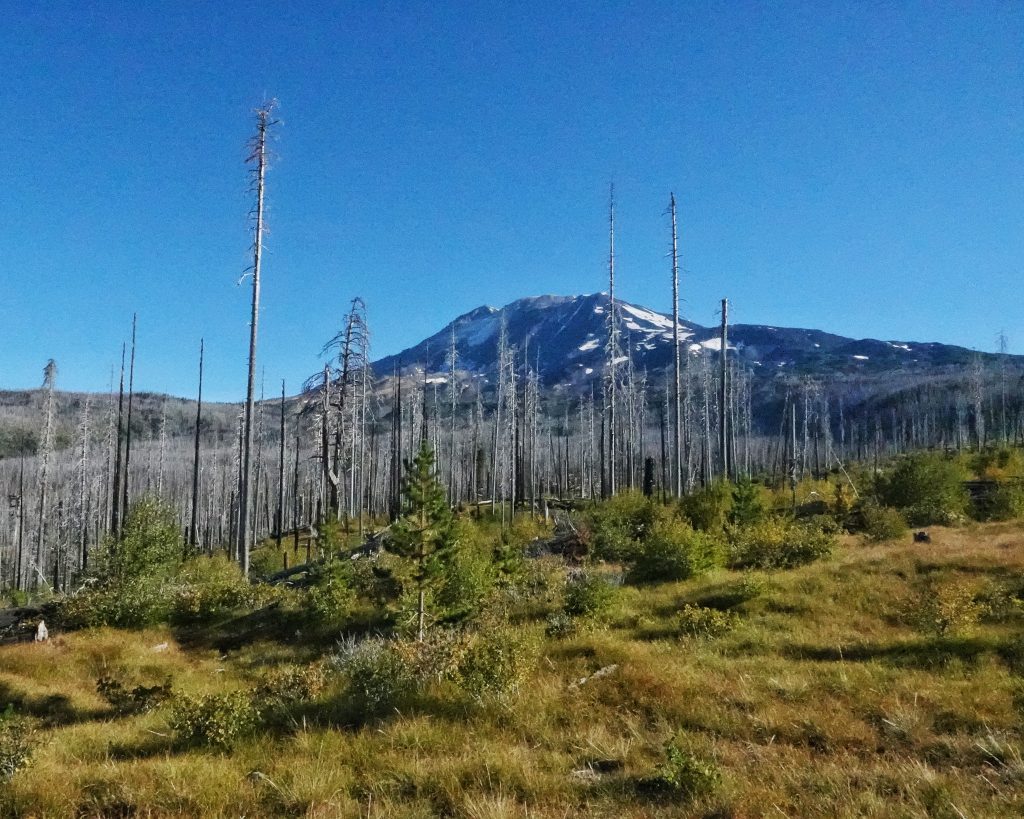
I’ve made two trips recently to the south side of Mt. Adams, in the area where the Cascade Creek fire burned over 20,000 acres in the fall of 2012. My first trip was mostly reconnaissance, trying to ascertain what kind of shape the last 8 miles of dirt road was in leading to the South Climb trailhead, and wondering if there were any Erigonum still blooming, because of my interest in helping Merrill Peterson collect information for his study of the butterfly genus Euphilotes. It was a heavily overcast day, with occasional rain, so the bug hunting was poor, and there were a surprisingly (to me, though it shouldn’t have been- it was, after all, a Saturday) large number of people traveling this one lane road. And not all of them were traveling at what I consider to be safe and sane speeds for such a road. So I parked and hiked at about the halfway point, rather than compete for space on that narrow road. But I was able to talk to a couple in a passenger car who said the road was passable all the way to the trailhead, provided one was slow and careful. Though I didn’t see any blooming Eriogonum, I only made it to about 4,600’ elevation, and I wouldn’t expect them to still be flowering that low. So I planned another trip for a few days later, when it would be sunny, and a weekday.
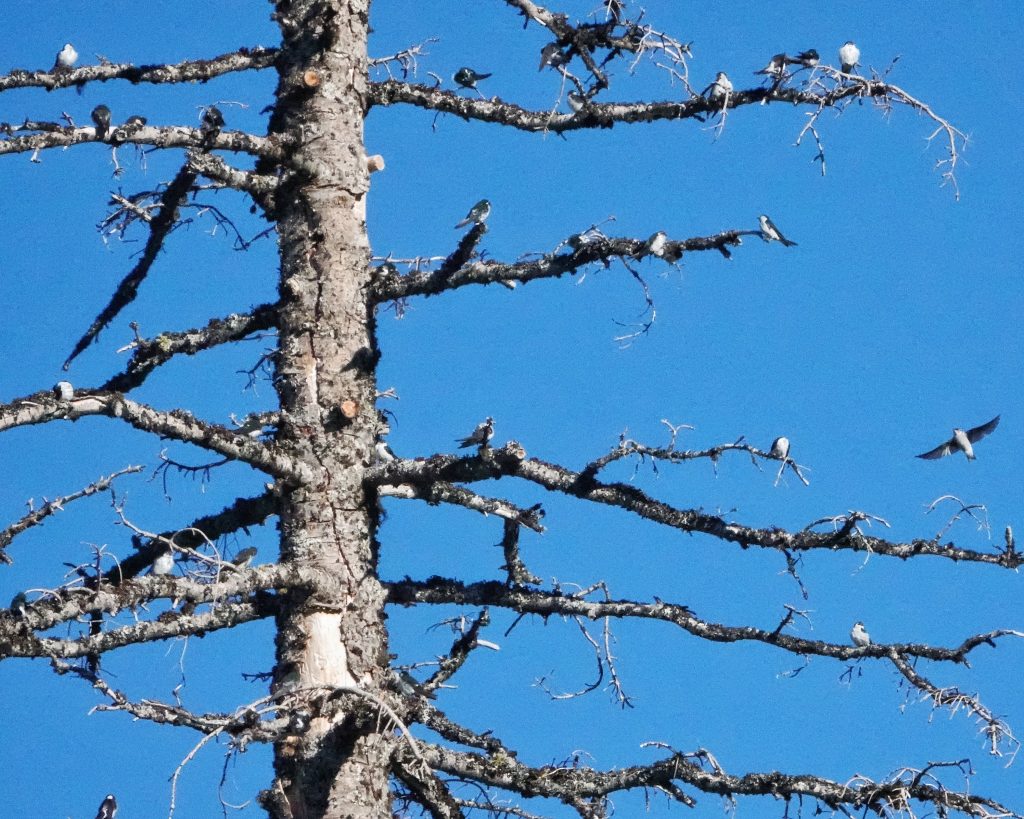
Last Thursday morning I headed back there, but first I made a stop at South Prairie, to unsuccessfully look for blooming sundew, though I did find some dragonflies, and one of them was a lifer, a variable darner (Aeshna interrupta). Then I spent a couple hours at Peterson Prairie, which was all a flutter with butterflies, many of them nectaring on the masses of asters in that meadow. I actually started to make a stab at figuring out which of the 62 Erigeron sp. that we have in the PNW it might be, but I didn’t have that much patience amidst all of those leps. And, to be honest, my aster identification skills are so poor that I didn’t even know what the likely suspects were.
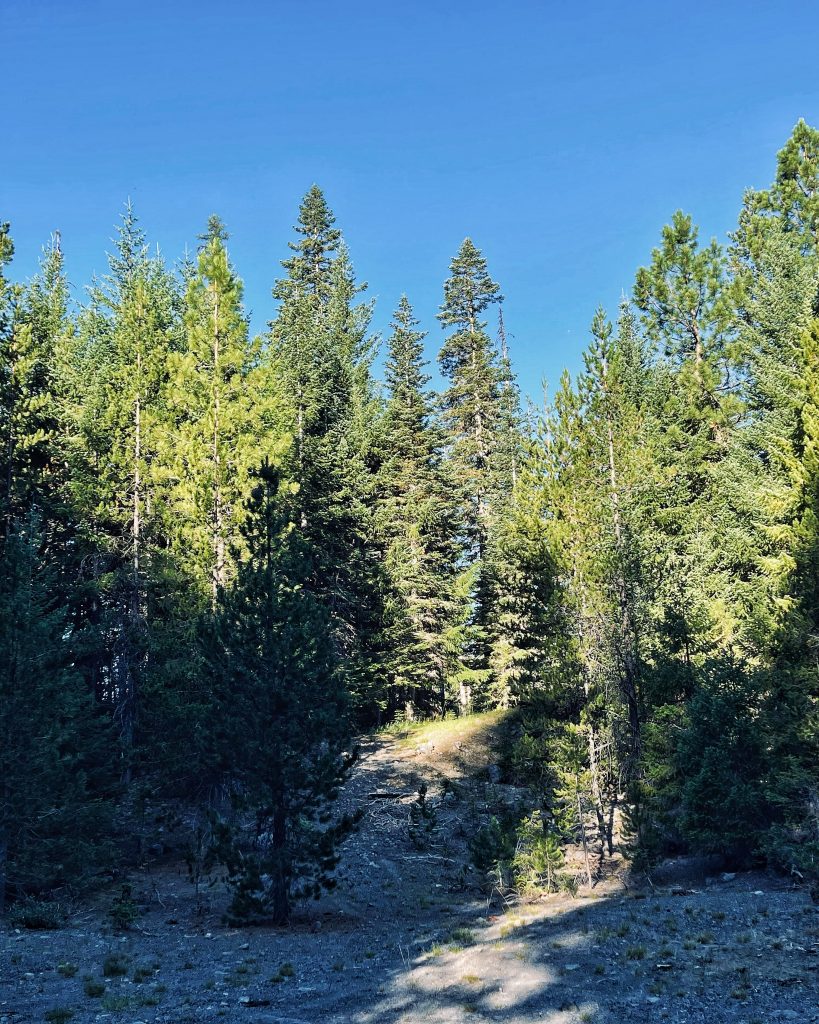
With the shadows creeping past the halfway point of that meadow, I packed it in and headed up towards Mt. Adams. On my previous trip I had found an abandoned gravel pit on a side road off NFS 8040, about halfway to the South Climb Trailhead, and it seemed like a good spot for camping and mothing. I reached it at about 6:30, and immediately set off exploring. After proving to myself that the road was a dead end due to fallen trees, and that I therefore didn’t have to worry about traffic coming from that direction, I walked back to my van, and found people parked next to it. But they were nice people, an older guy and his daughter, and since I’d only be there for the night and they were looking for a multi day site, and the campsite was at least a quarter acre, I considered inviting them to stay. Until I found out they had dogs. Now, I like dogs in general, and will almost always pet ones that come within my orbit, but I simply couldn’t countenance having potentially unleashed, potentially barking dogs within my camp space. So instead I told them of another spot nearby (which they used and ended up being a better location for them anyway), and they went on their way.
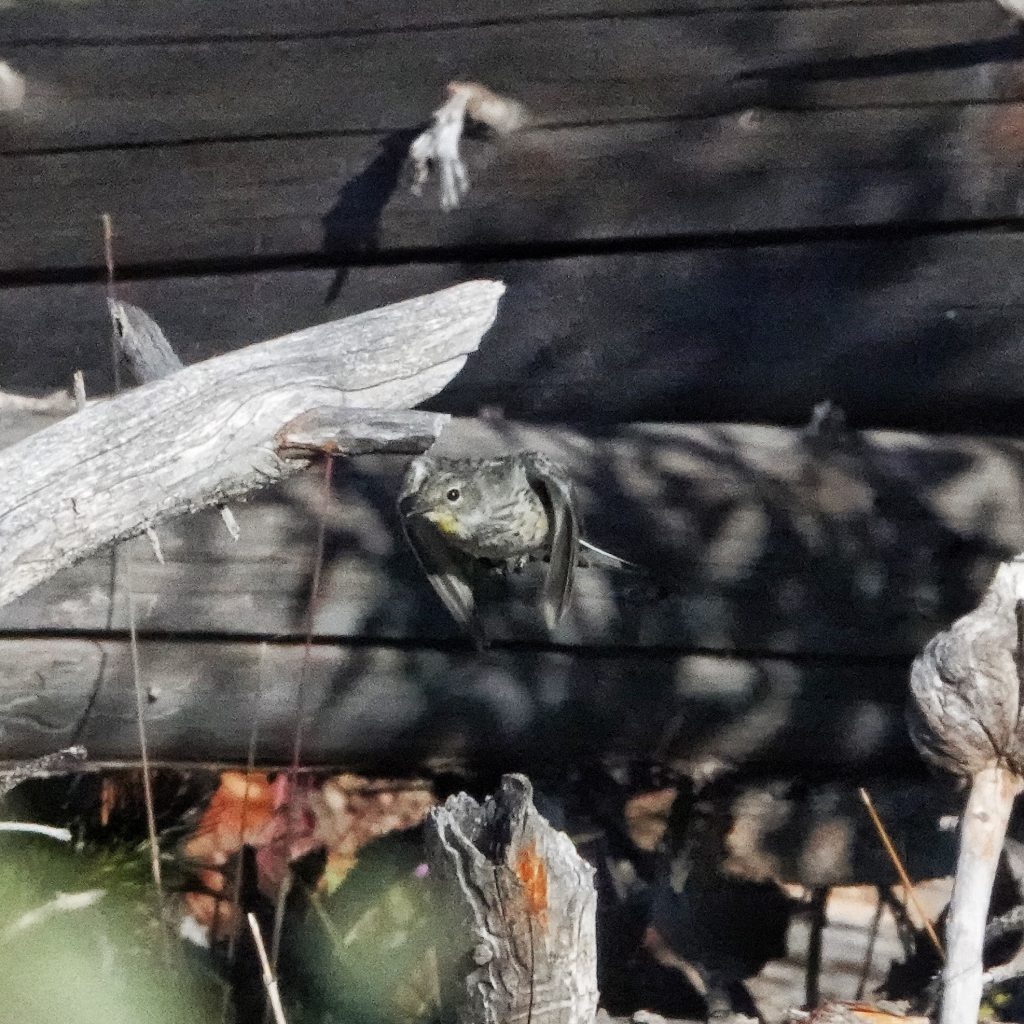
Then I set up my Temples of Ultraviolet Light, devoured a quantity of trail mix and string cheese, and started to settle in for the night. Until I remembered the quart of bananas, peaches, brown sugar, and beer fermenting in the van. The pros call using one of these concoctions ’sugaring for moths’, and claim great success at getting some moths that don’t often come to lights. I had tried it with no success 16 days previously on one night ( I talk about this in 5th Night of Moth Week) during moth week, but in the hopes it just hadn’t fermented enough I stashed the jug in my van. So I headed back out, spreading the mixture liberally on about a dozen trees, logs, and rocks in the vicinity. It was only after I was done that it occurred to me that the smell of that moth sugar might attract bears, and that placing quantities of the stuff around my campsite and along a path I’d walk several times in the dark might not have been a smart move. But, while I don’t know whether that whole procedure could have been problematic, on that night at least the sugar attracted exactly as many bears as moths- zero.
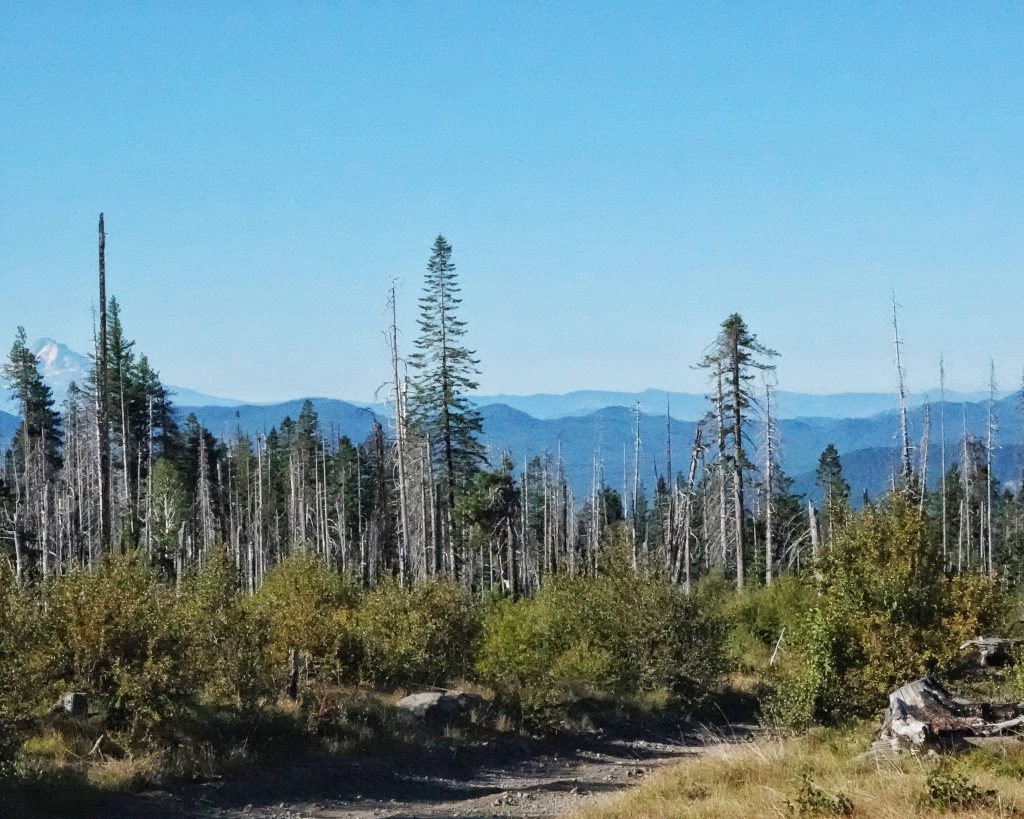
It was down to 66⁰ at sunset, and with the clear skies the temperature continued to drop sharply after nightfall, although the stiff breeze I had anchored my sheets against moderated to nearly nothing once it was full dark. About the time it was fully dark the first macromoths showed up, and they came slowly but steadily until about 2am, when the temperature dropped into the 40⁰s. I think I ended up with about 20 species of moths, although the numbers of each species were not very high, except for a wave of about 10 Tolype distincta that all showed up after midnight. I also had the longhorn beetles Ortholeptura valida and a couple serendipitous Tragosoma soror come visit my lights, and I found the ironclad beetle Phellopsis porcata, and a tenibrionid beetle in the genus Coelocnemis (possibly magna although I haven’t verified that yet) crawling in the spotlight of my headlamp along the dusty road between my setups.
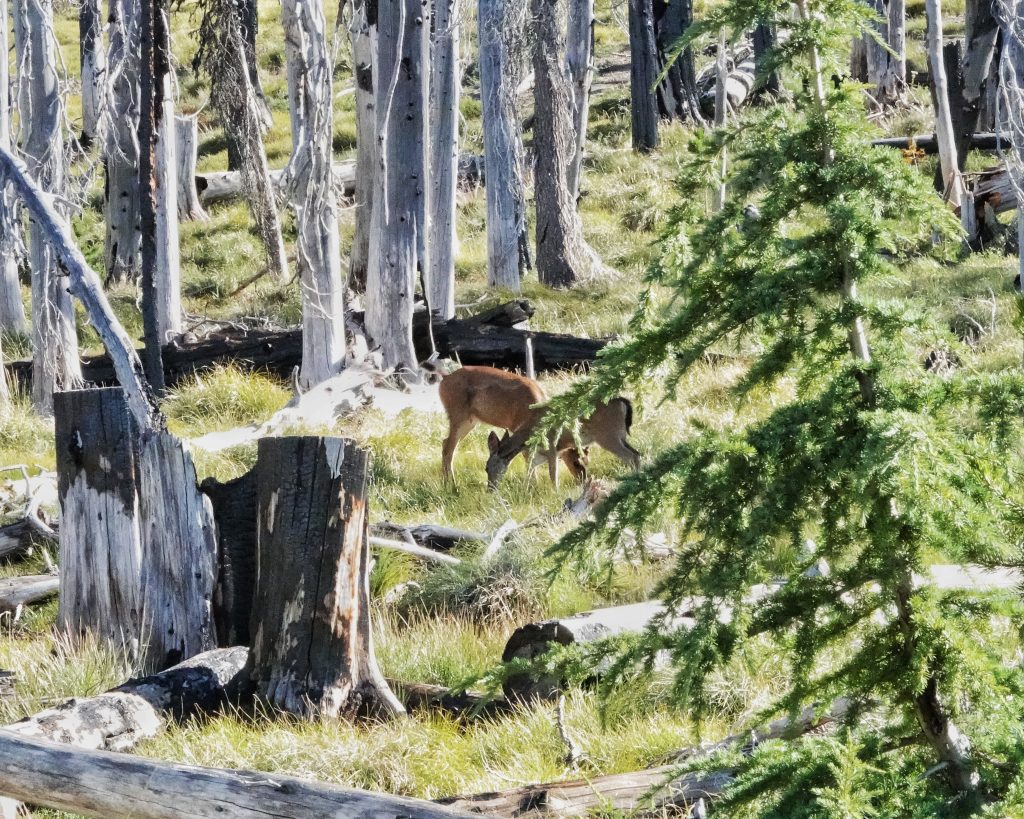
I finally crashed about 3am (I literally fell asleep midway through editing a photo), but my eyes popped open at 5:46am, and against my better judgment my curiosity propelled me from my nest in the van. And it was worthwhile getting to the sheets before the impending sunrise scattered the remaining moths, because I found 5 more species that had either come in after I gave up, or I had initially missed. By 8am I was packed up and on my way up the mountain, although not without first having a somewhat harrowing and potentially unsuccessful ascent of the last steep, rocky section of dead end road leading to the campsite, which I’d come down easily enough the previous afternoon (my van is front wheel drive, but only 2 wheel drive, and I dread the day my enthusiasm for further exceeds its ability to navigate it), and a pleasant chat with my previous afternoon’s visitors who were camped up the road (and whose unleashed dogs rushed out barking when I stopped to say hello).
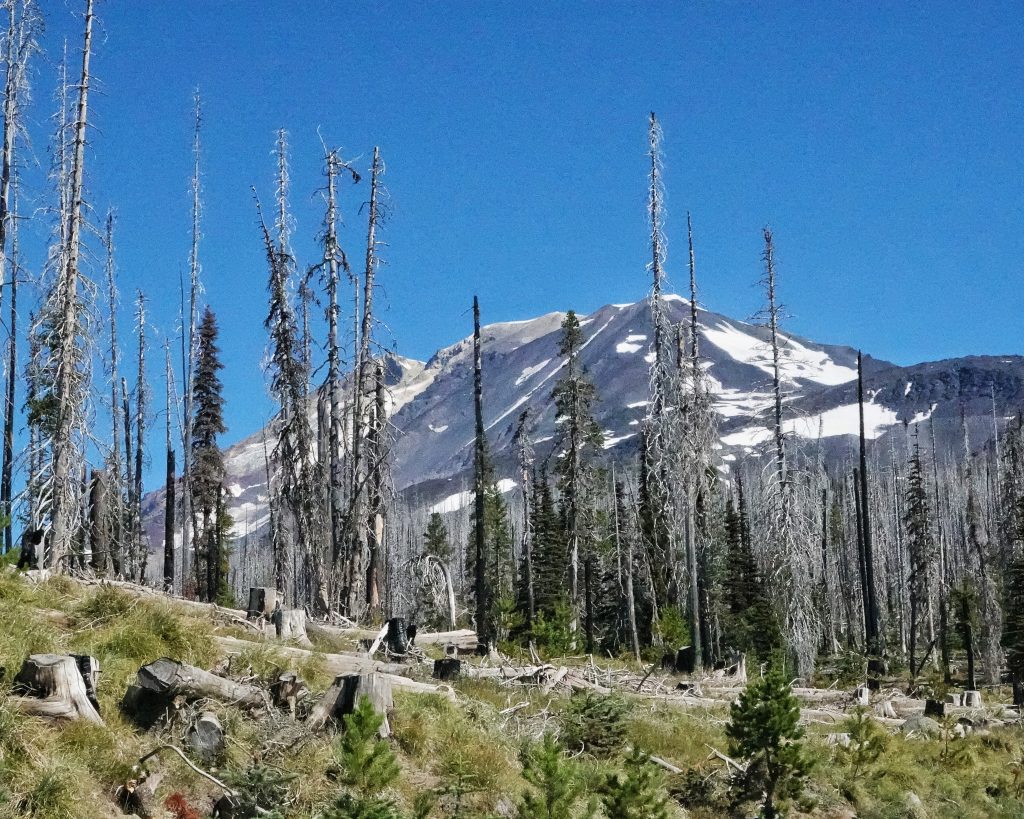
Until I reached the end of the road I was more or less constantly surrounded by evidence not only of the destruction wrought by the Cascade Creek fire, but also by evidence of the remarkable regenerative power of nature. There are waist high conifers everywhere you look, quite a few small but expanding groves of quaking aspen, and willows, gooseberries, thimbleberries, huckleberries and manzanita carpeting the earth. There are juncos and western tanagers and yellow-rumped warblers and countless other birds darting from thicket to thicket, Cascade golden-Mantled ground squirrels and what I now know are yellow-pine chipmunks scurrying back and forth across the road on important food procuring missions, and dozens of (mostly) violet-green and tree swallows were perched in a big snag, soaking up some rays and waiting for that solar energy to stimulate the insects into flight. And because of the lack of tree canopy, Mt. Adams is virtually unobscured, a volcanic presence that embodies both change and seeming permanence, and looms over all of us tiny, fragile, transient living organisms, all striving to survive. But life itself, with different faces, different forms, different names, different needs, is actually what comes closest to permanence here.
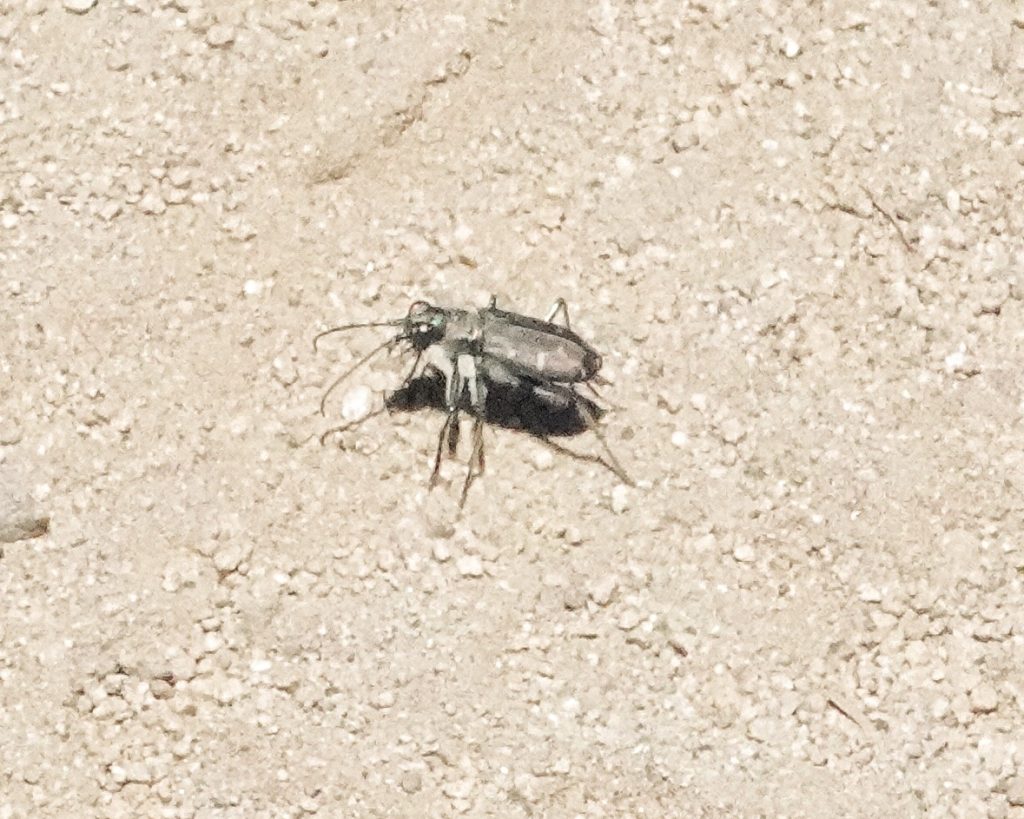
At the parking area for the twin trailheads of South Climb #183 and Cold Springs Trail #72 there were at least 50 cars and a pair of blacktail deer, a buck and a doe. Asters, pearly everlasting, yarrow, penstemon, lupine, and an occasional clump of Ericameria bloomeri rabbitbrush were all blooming alongside the Cold Springs trail, and there were some field crescents and Anna’s blue butterflies visiting them. I curved off the trail to get back to the road because there were some large clumps of the rabbitbrush there, where I found the same two butterflies and a few unidentified skippers that were too fast for my camera or my eyes. Occasionally I heard the high pitched whine of a large sand wasp, as well as various other Hymenoptera and Diptera, but they were also all too fast for me, although it gave me great pleasure to see them in this regenerating landscape.
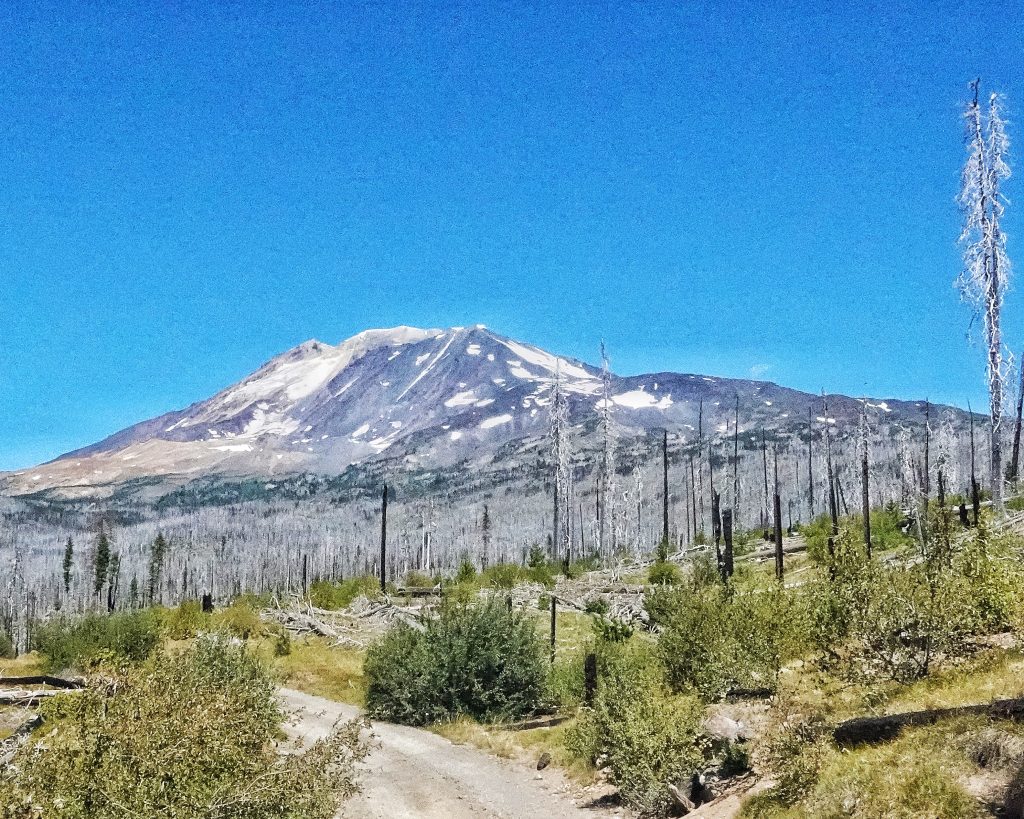
Eventually I started up the South Climb trail, delighting in the Cicindela oregona (Western Tiger Beetles) alternately racing and pausing in the clear, sandy areas of the trail. I found a mating pair of field crescents, and a mating pair of Anna’s blues, but what I did not find was any blooming Eriogonum, or any Euphilotes butterflies. After about a mile, at roughly 6,200’ of elevation, my late night and short rest finally caught up with me and I began the descent, where I was fortunate enough to find a field crescent and an Anna’s blue battling over some unknown fecal treasure. It had been a glorious day, in fact a glorious pair of days, filled with bugs and botany, wonderful scenery and nearly perfect late summer weather, but it was time to ease my van down that rough little road, and ease myself back into the flatlands world, buoyed, at least for awhile, by the wonders I had found in the mountains. For an excellent, more bird centric, and frankly more knowledgeable log of a trip to the same area just a year after the Cascade Creek fire, see In the wake of fire: Cascade Creek Burn Site Guide.
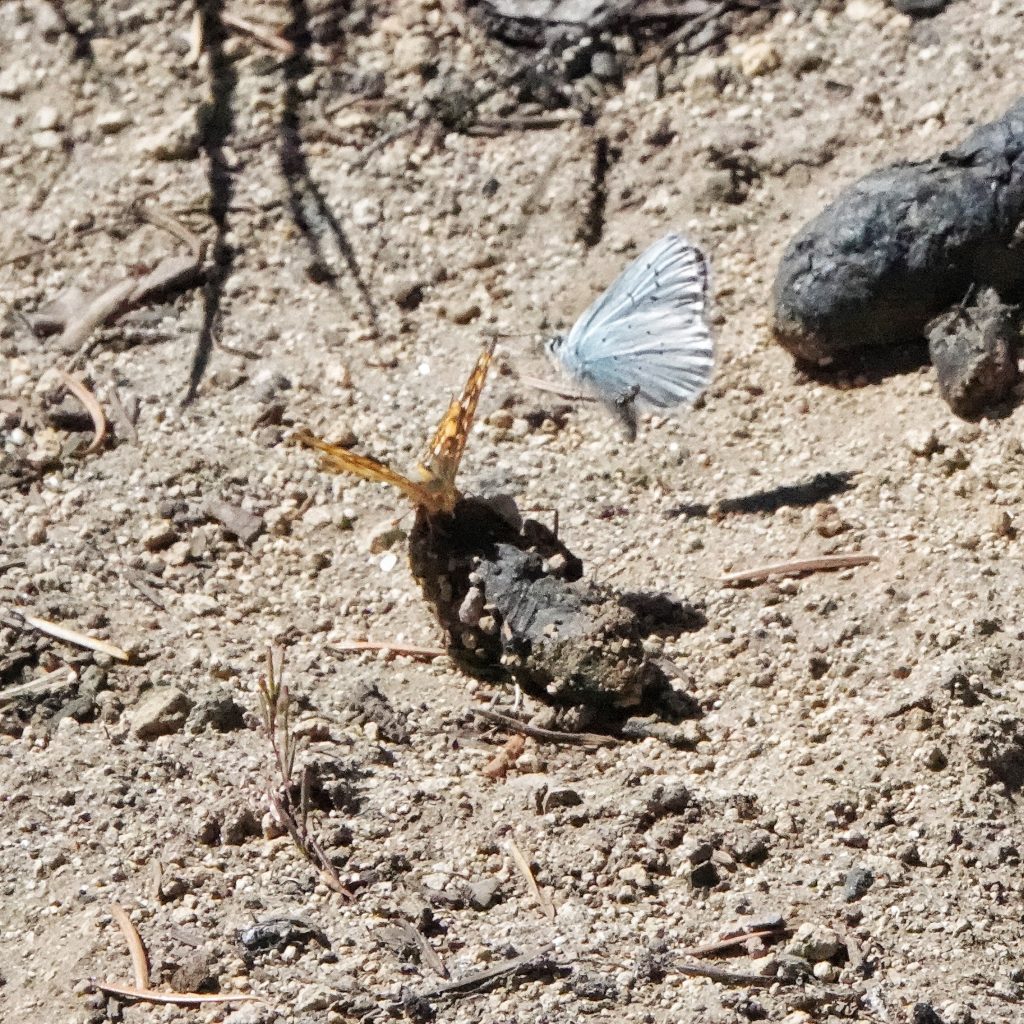
It’s been a while, but I wanted to say again how much I enjoy your writing. Thank you so much for this valuable resource on the natural wonders of the PNW. This is a wonderful way to spend a snowy/rainy evening indoors.
Thank you so much for your kind words, Jerry!